Artists at the Blanton: When a Museum Job is Muse
Introduction by Lizabel Stella, Social Media & Digital Content Manager, Blanton Museum of Art
How can a job be your muse? The exhibition Day Jobs, on view at the Blanton through July 23, 2023, probes this very question.
Many visual artists in the U.S. struggle to make a living solely through their art, and the need to take on additional work to supplement income seems inevitable. What if such employment could likewise fuel artistic practice? What if it could inspire new ideas and new ways of thinking? The artworks on view in Day Jobs showcase how taking on jobs, like dishwasher, furniture maker, graphic designer, hairstylist, ICU nurse, lawyer, nanny, and even museum professional, provided more than just a pay check for artists.

I invited fellow staff at the Blanton to share their own experiences of what it’s like to be a visual artist and work in an art museum. Click on the names to read about them in their own words. I hope their stories serve as inspiration and you enjoy getting to know more about the artists behind so many important roles at the Blanton.
Amanda Livingston, Gallery Assistant / Artist
I grew up with many passions, including art. Like many kids I doodled, crafted, and made many a mess of supplies. On holidays I would make name plates for the dinner table. My aunt and uncle still use one of the Christmas sets to this day, with little trees, snowmen, and ornaments adorning the papers. Birthday cards were always handmade. As I got older I started to play with different materials. I tried out colored pencils and paints, singing, and beaded jewelry with my granny. I even went through a duct-tape phase making wallets, bracelets, purses, roses… you name it. I played trumpet for seven years and pursued photography for eleven. Despite all of that time and effort, I still couldn’t consider myself an artist.
The term “Artist” always seemed too mighty to claim. It started to feel like a title intangible to me. Me? An Artist? No way. I’m not good enough. If my inner critic had a volume dial it was set to 2. It was a whisper that I could make out at times, but was much easier to ignore and tune out. Through middle and high school that volume steadily rose. It was in college when it maxed and became deafening. No amount of praise from professors or encouragement from classmates could turn it back down. I remember after every critique in my Metals 1 class at Texas State University, the first stop leaving that classroom was the dumpster. I went to two different colleges for art and photography. I dropped out both times and while there were bigger forces at play, a huge reason why I dropped out was that I had started to believe I wasn’t cut out to be an artist.
But art, in all sorts of forms, has always been a part of my life. So if I couldn’t be the artist, who could I be? That’s when I stumbled across the job listing for a Gallery Assistant at the Blanton Museum of Art. I decided to apply. I wasn’t going to be making art, then I would settle to work around art.
As a Gallery Assistant it’s my job to protect the art, but also to be available to visitors to answer questions. This has brought a lot of self reflection and conversations with patrons, docents, and volunteers. One of these conversations was with a regular Saturday volunteer, Andres Sanchez. Andres is a photographer, painter, illustrator, and miniature D&D figurine sculpture/painter.
He and I got to talking one day about what makes someone an artist including how society has added a fantastical quality to the title of an artist and how silly it is. I opened up about my story and told him that despite my experience I had a resistance to allowing myself to take the title of an artist. When Andres asked me why, I gave him the honest and simple answer—I am not good enough.
Andres did not ask to see my art or change my mind about the quality of my art, but just asked, “An artist is a person who makes art, right?” I replied yes, but was admittedly confused. “And you just told me you make art, right?” Andres asked me. I replied again yes.
Andres then stood there and had me say that I was an artist, aloud, until I could say it with conviction and even a little bit of confidence. It took a few tries, but that was the first time it clicked. It really is that simple. It doesn’t matter if there’s a deep message behind it or simply something pleasing to the eye. An artist is someone who makes art and I had been holding myself to an impossible standard and expectation. Anyone else shows me their art and I immediately consider them an artist, no questions asked, yet I could not give myself that same treatment.
There was a time where I had given up being an artist entirely, but thankfully my job at the Blanton has opened a door to the metaphorical House of Healing. I do not have a studio. I do not have a portfolio of my work, despite the archives with thousands of photographs. And I do not have much to show for works in other mediums, because those have either been tossed out, destroyed, or packed away – out of sight and out of mind – to gather dust in a garage.
That conversation was exactly what I needed at exactly the perfect time. Since then I’ve started drawing again. I finally dug out my hard drive and edited some old photos. I started planning projects to finally use my printmaking materials, paints, and empty frames for. Because of my job at the Blanton Museum of Art and the interactions it has brought me, I may be in a transitional and rediscovery phase of my art, but nonetheless I am an artist.
Find Amanda at @creatingcasually on Instagram.

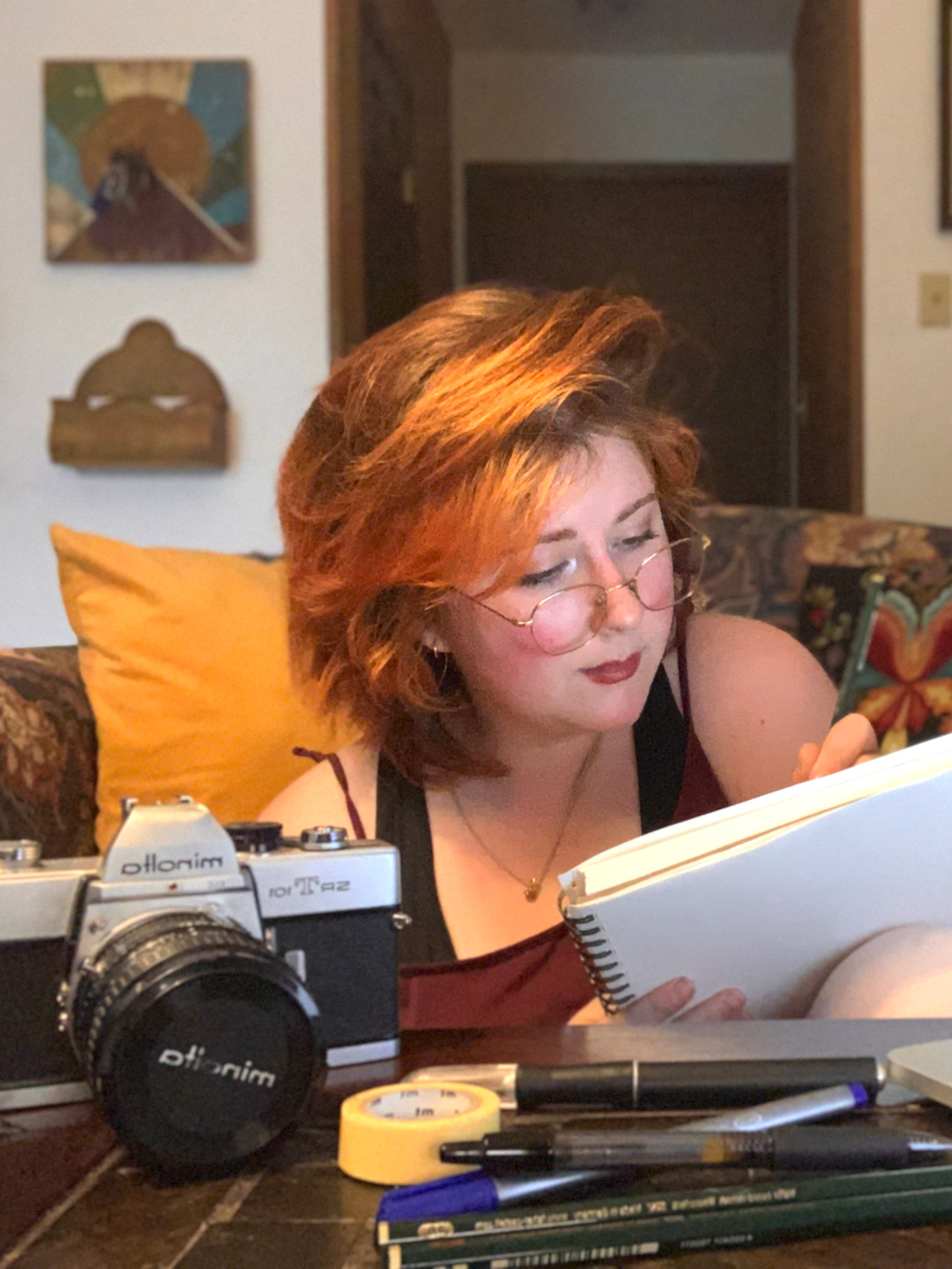
Andrew Anderson, Preparator, Carpentry / Artist
Working at an art museum is a constant wellspring of inspiration and ideas. My daily immersion amongst masterpieces allows me to absorb the subtle nuances of color, the interplay of forms, and the stillness of negative space all the while challenging my notion of what is and what can be. This immersion drives my dedication and love of minimal and reductive work. It fuels my artistic drive to distill intricate ideas and aesthetics into their most essential elements in a myriad of mediums. The Blanton enriches my understanding of artistry and of its quality—not only of its matter but also of its ideas. This institution provides a reprieve from chaos, a sanctuary for contemplation, and in turn, a defense for thought.
Find Andrew at andrewandersonstudio.com and @andrewandersonstudio on Instagram.

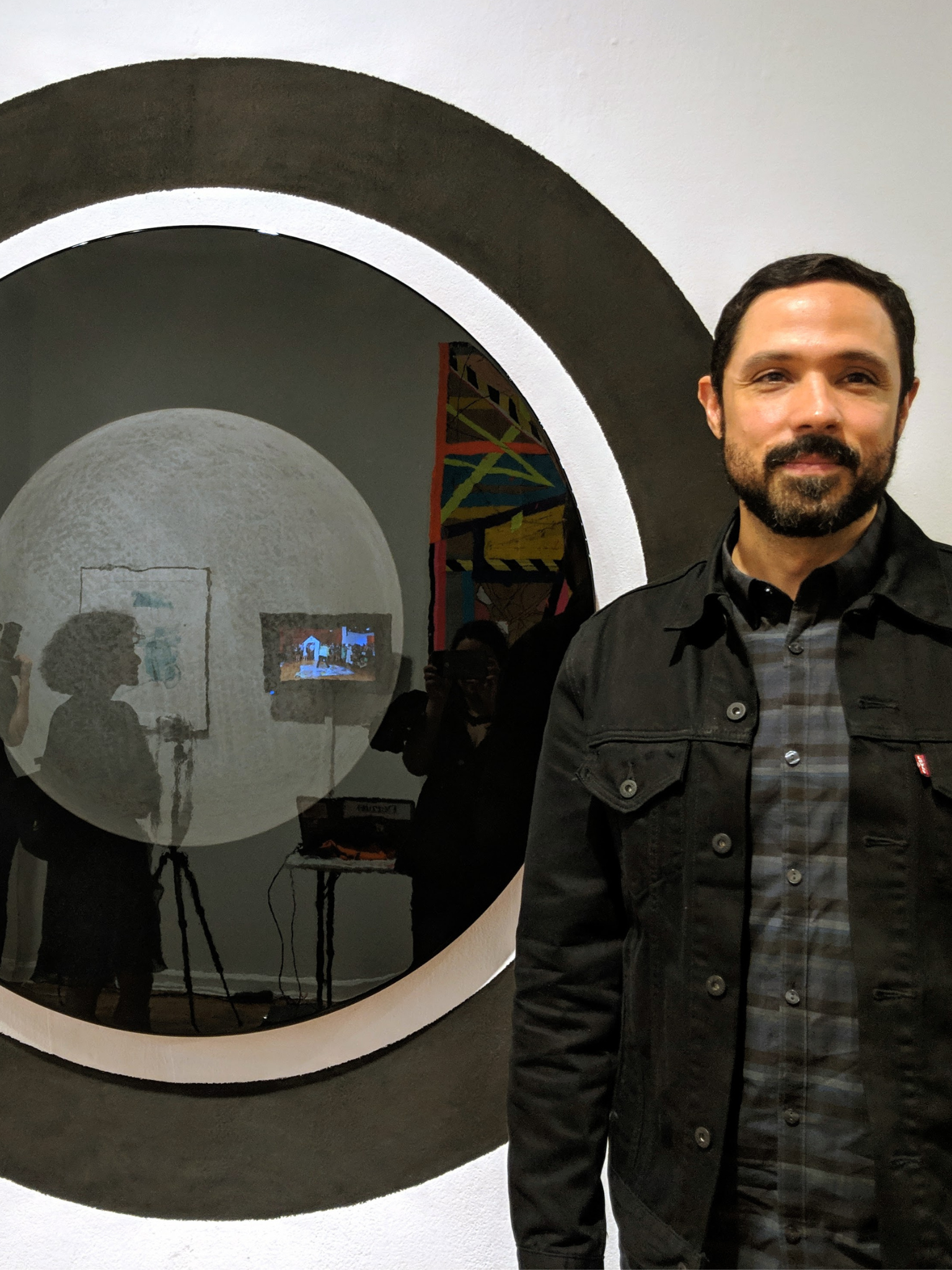
Annalise Gratovich, Matting & Framing Preparator / Artist
I’m a printmaker that specializes in large-scale woodcuts and copper plate etchings. My work is largely figurative and surrealistic, drawing inspiration from my Ukrainian heritage and ideas of longing and belonging, displacement, personhood, identity, relationships with and within the natural world, and duality. I carve wood, etch metal, hand dye delicate papers, and use ink,
paper, and a large manual printing press from the 1920s to create multiple originals. My print shop, High Low Print Co., is housed at Canopy where I participate in open studio every first Saturday of the month. My upcoming exhibitions are with the Plains Art Museum in Fargo, ND and Flatbed Press, Austin, TX.
My title at the Blanton is Matting & Framing Preparator. I have a studio off the Prints
& Drawings storage area where I prepare all works on paper in the museum (prints, drawings,
paintings, photographs, books, manuscripts, mail art, sculptural objects, etc.) for exhibition, collections housing, and loans, and maintain housings and frames for our collection of 17,000 works on paper. I install complex works on paper in our galleries and design and build collections housings for objects that do not fit our standardized systems.
While my artwork is not informed by the technical labor of my museum career, there is a
tangible flow of inspiration and practical knowledge that travels between my own studio career
and experience in fine art print publishing and collections, and the objects I handle and form
relationships with inside the museum. From studio to studio this flow of information varies
from an intimate knowledge of paper types, of paper ages and provenance, all of which inform
paper’s particular abilities, to the visual stimulation and appreciation of mark making—a
scrolling line in black chalk on a Renaissance drawing, a webbed figurative contour of engraved
lines on paper from the 1600s, the smell and texture on an oversize process—laden Modern
etching, kinetic layers of color on a contemporary multi-panel piece… I have a great appreciation for this flow of information between my practices, and my concluding thought is that paper really is the best substrate. I might be a little biased…
Find Annalise at annalisegratovich.com and @annalisegratovich on Instagram.


Christopher A. Rodriguez, Assistant Manager of Security / Artist
I am an artist whose work takes many different shapes. I specialize in ballpoint pen drawings, however my art takes the form of woodworking, murals, and digital art as well. It is important for me to pursue any avenue that allows me to bring an idea to fruition. Creating for me is about balance, harmonizing personal and professional life with my mental and creative well-being.
While working as an Assistant Manager of Security doesn’t directly translate to my art practice, I do have a unique relationship with the museum’s collection. I have the opportunity to be truly alone with the art each day, often being the last person to interact with the collection. In these moments I find myself pausing to discover nuances in a piece I love, or techniques in a piece that I hadn’t fully appreciated. It may not always register at the time, but these pauses inspire me to explore new ideas and inform my work.
Find Christopher at @zillabrainz on Instagram.


Eric Mathis, Preparator / Artist
To be around the creations of human culture throughout time is surreal. Handling the objects and spending intimate time with them has always been a dream of mine, providing insight in my own studio practice. From exploring materials and methods to unique ways of display, this experience has influenced my own expression and allowed exploration of who I am as an artist.
Find Eric at @erks_ on Instagram.


Justin Beeson, Facilities Assistant / Artist
I’ve been making art in some capacity since I was a child, but in a professional context I’ve been working around 10 years developing my style, which I describe as similar etching with fine line hatching. Although most art I present to people are drawings with pen and ink, my education was primarily printmaking/engraving.
As a Visual Artist, I like my work to invite a discussion about interior conflict. Centered mostly around portraiture with an overall fragmented and darker atmosphere. The art I make is heavily influenced by film and actors, techniques of cinematography like cropping and shadow can be found in my work.
The death of actor Philip Seymour Hoffman in early 2014 kickstarted the idea of fan-based portraiture. His open addiction to drugs was well-known, but his sudden death was even a surprise to his closest friends. The idea that a person can be so different than what they outwardly portray is the most interesting thing to me. From this idea I started my “Fractured Portrait” series.
My day job working around the instruments deep within the Blanton could be alluded to in my art with the interior and industrial symbolism. Those design elements originally made their way into my work during my years of working construction with my father.
Find Justin at justinbeeson.myportfolio.com or @justin_beeson_art on Instagram.
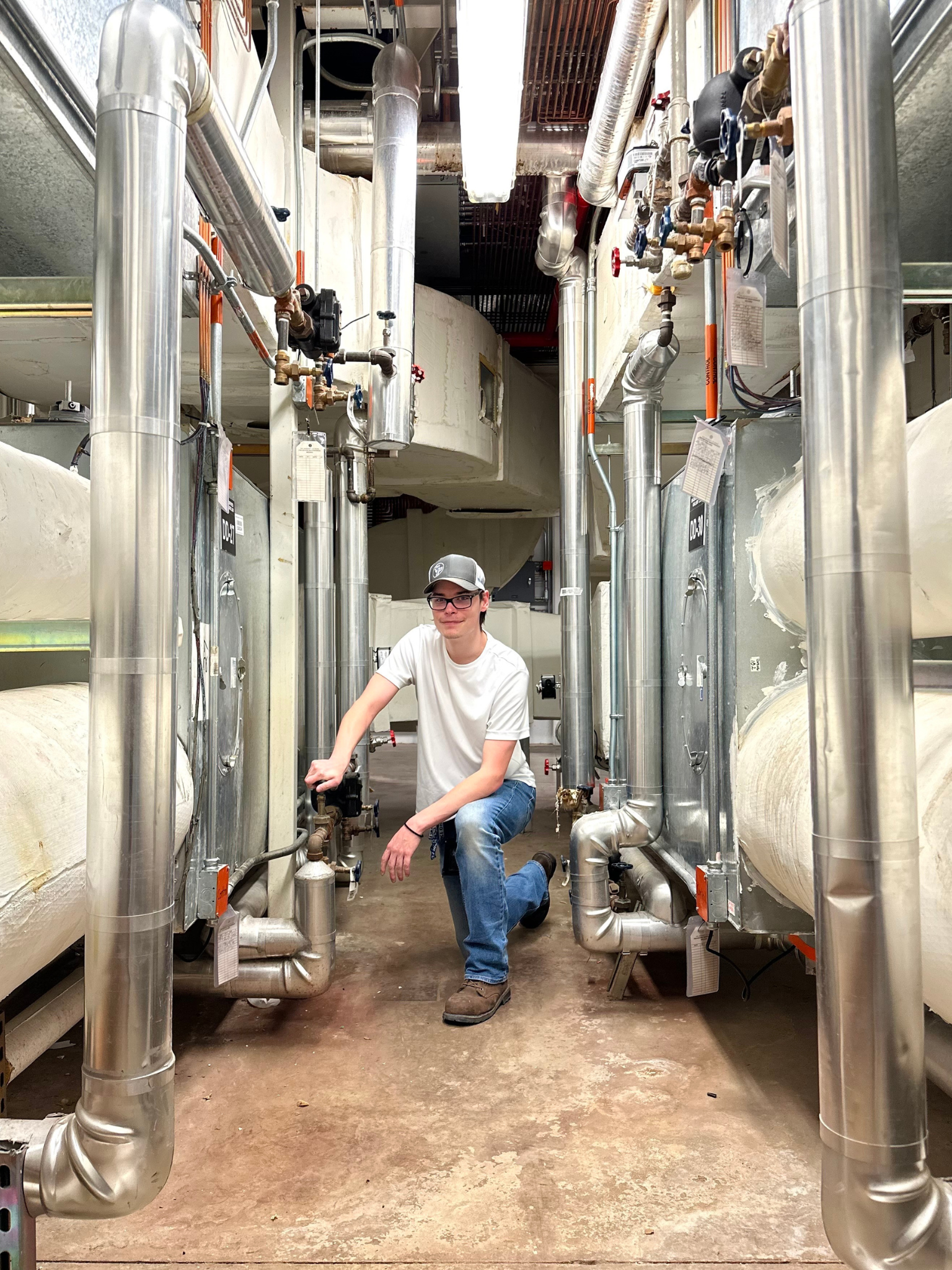

Kalia Aquino, Gallery Assistant / Artist
Being a guard at the Blanton has been integral to my artistic practice for some time now.
As a self-taught artist, it has been a haven for me, the museum, a vessel of knowledge, and the legends in our collection stand in as my patient teachers. I wholeheartedly believe that besides the artists themselves, museum guards spend the most time looking at these works on our walls. I greet them every day with curiosity and gratitude, always looking harder, and a little longer.
Something I think a lot about is accessibility to art education, how the everyday person
operates in these spaces, and how then can I communicate my own ideas successfully to these everyday people. As a guard, I’m not just watching the art, but the intimate interactions that take place all around the art. How long are these pieces looked at? What colors do they contain? Which works evoke discourse, and why? I’m taking note of everything.
I have made hundreds of drawings in the galleries to then take home and use to inform my paintings. I use the Flavin light fixture featured in Day Jobs consciously, as a light source for my drawing when there’s spare time in the galleries. Knowing he too once stood in the gallery corners of the MoMA, not knowing that he would become a part of the same collection he was
guarding. I one day hope the same for myself.
Find Kalia at kaliaaquino.com or @kaliaaquino on Instagram.


Matthew Langland, Head of Installation & Exhibition Design / Artist
The work I do at the museum as Exhibition Designer doesn’t directly influence my painting practice, but it does prepare me for it greatly.
With a full-time job and two young children, I can’t afford to wait for inspiration to just strike whenever I have studio time. Thankfully, at work—all day, every day—I’m scrutinizing, discussing, and over-thinking visual situations and problems to the point that when I’m able to carve out studio time, I’m already in a revved-up, creative, and productive headspace. The day job provides the momentum needed to get painting. Whether or not I’ll have enough physical energy after work some days can be a different story, however…
Find Matthew at @matthewlangland on Instagram.

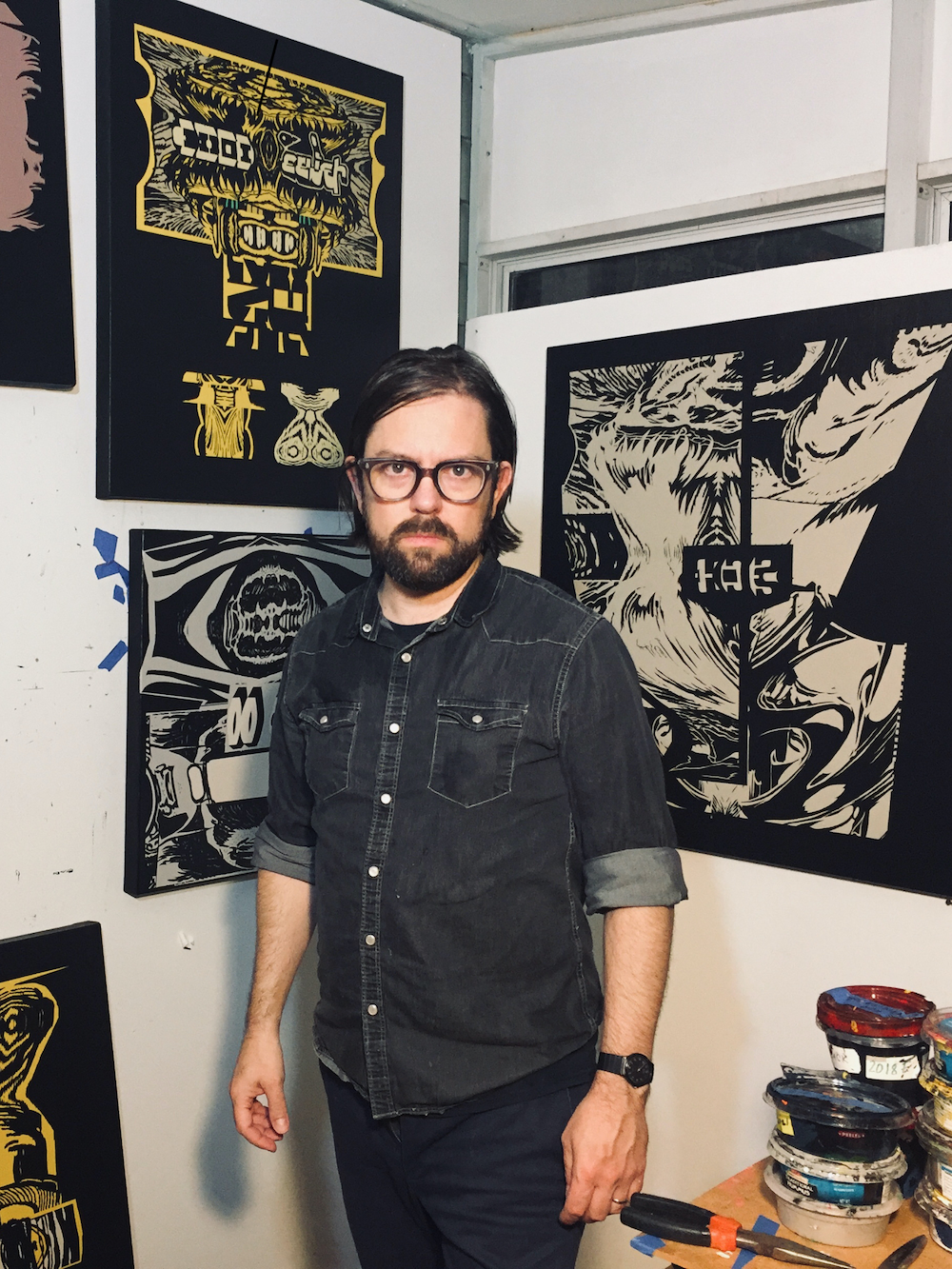
Michael Carnes, Assistant of Collections & Exhibitions / Artist
I’m a painter working with oil and acrylic paint mediums, utilizing canvas and paper surfaces. My work, which is figurative, concerns itself with politics of sexual identity and my own pursuit of sexual liberation. Subjects seen throughout my work run the gamut from self-portraiture, to friends, acquaintances, and strangers involving confrontations and role playing—real, imagined and in fantasy. Through my work, I examine intimate relationships with people, cataloguing the tensions, misapprehensions, and discomfort inherent in these meetings.
My title at the Blanton Museum of Art is Assistant of Collections & Exhibitions. I mainly work out of the Registrar’s Office with the museum archive, inputting data into our database, and handling rights and reproductions requests. Perhaps you may even find me locating artworks in storage or spot me filling out a condition report on a collection object on view in the galleries. I get to be up close and personal with all art forms created by artists of all backgrounds and different time periods throughout history. The objects I handle on a day-to-day basis vary widely. One day I may be working with a small Albrecht Dürer print from the 16th century, the next day I may be working with a larger-than-life Luis Jiménez sculpture, or perhaps I’m overseeing logistics for a complicated art installation. As of late, I’ve been especially inspired by objects in the collection by the late artist, Frank C. Moore. His strong political stance evident throughout his work, nuanced with homoerotic imagery deeply fascinates me. My current day job at the museum being surrounded by artwork inspires me to want to branch out into other forms of artmaking in future. This environment feeds my brain flow in a way that continuously emphasizes the limitless ways to execute storytelling through the visual language outside of my comfort zone that is painting. I’m nearing thirty years of age, and my coming-of-age exploration throughout my work during my twenties is coming to a bittersweet ending. The older I get putting in these hours at work, the more I want to give the paint brushes a rest and create a giant 50-foot-tall figurative sculpture with my own two hands. We’ll see what happens, I suppose I’m going to need a lot of space and time to execute such ideas.
Find Michael at @michaelcarnesjr on Instagram.


Neal Flynn, Graduate Teaching Fellow / Artist
My artworks are primarily collages and assemblages that employ familiar design and retail vernacular to highlight the inextricability of ownership, loss, and violence in the principles of modernity and Westernization. Creating the works involves collecting, journaling, photographing, researching, and responding. The materials and imagery I work with are sourced from a culture of idealized advancement, incongruity, and forgetting—my culture.
At the Blanton I work in the Education department leading group visits through the museum’s galleries. Engaging with the landmark exhibition Day Jobs has been one of the most meaningful and validating experiences I’ve had professionally. This institutional acknowledgment of the non-studio labor of artists has made me more comfortable accepting the fact that my “recent works” are not dated as recently as a full-time practicing artist’s might typically be. Not only is the art in Day Jobs incredible and inspiring, but I left my first visit to the show with confirmation that creativity is part of many kinds of work, not just the work of the studio artist.
My time is currently split between school, work, and artmaking, so I am grateful that all overlap. I can try out much of what I’m learning in my Art Education graduate program right away in museum teaching. The planning and research I do before leading a group experience ensures I’m prepared to provide important context and answer questions, but I try to be cognizant of my own subjectivities and navigate them in a way that prioritizes the development and sharing of new ideas within our temporary community of learners. I will inevitably learn something new by inviting my participants to share their thoughts, and they will be more willing to do so if I don’t act like I’m an expert. At the museum and in school, this collaborative teaching/learning process allows me to balance my own perspective and existing knowledge with fresh perspectives shared by students of all ages. Teaching in the galleries allows me to practice minimizing my own positionality to make space for others’, and working with ideas other than my own is essential when approaching intense and ambiguous concepts in the studio.
Find Neal at nealflynn.com or @seashepp on Instagram.

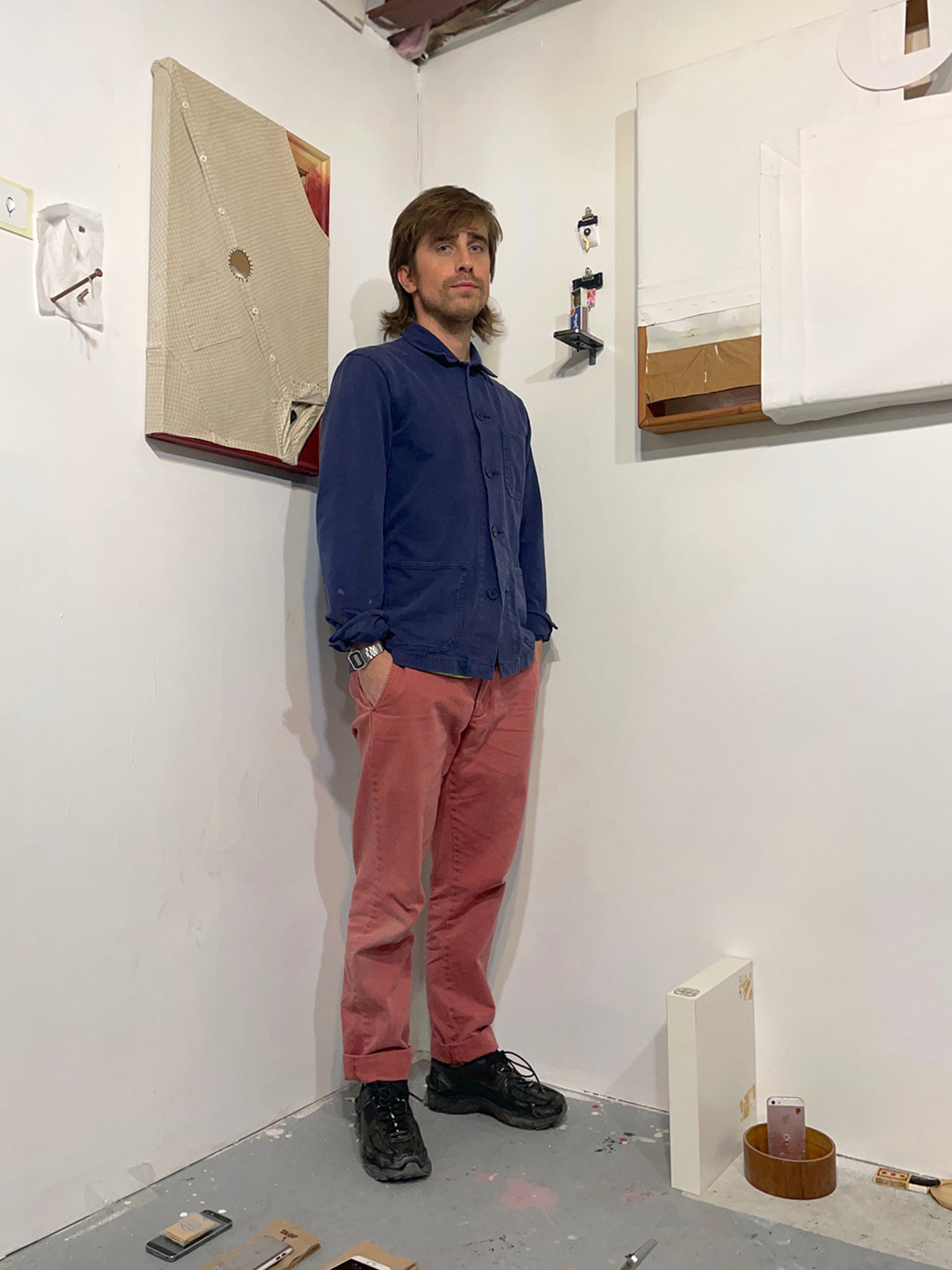
Rewon Shimray, Gallery Assistant / Artist
As a gallery assistant, having eight hours of exposure to art every day grounds me in my
personal art-making. In the months since starting work at the Blanton in 2022, I have seen my art rapidly improve. I spend a lot of my time studying painting techniques, especially in the European galleries. I mentally paint the portraits, imagining which tubes I would mix in which ratios and the order of layers I would build to create the piece in front of me. This mental practice allows me to go into my creative process with a premeditated clarity and decisiveness. Being a museum worker by day and artist by night, my life is a cycle in which I inhale others’ art, and exhale my own.
My personal work varies between portraiture, surrealism, object symbolism, geometric
abstraction, and cartoon illustration. The museum’s rich diversity in artworks, across centuries and medium, provides me a vast reference point for my varying styles.
Find Rewon at rewonshimray.com or @artbyrewon on Instagram.


Siobhán McCusker, Senior Museum Educator / Artist
As the senior museum educator for university audiences at the Blanton Museum of Art at The University of Texas at Austin, I am constantly on the lookout for connections to be made between classes on campus and artwork in our galleries. I become the bridge between the campus community and the museum; and then between artworks and students. In the museum, noticing is a valued skill. As I look at artworks together with university students from all disciplines — on Zoom or once again in the galleries with all our bodies together in one space — the invitation is to slow down, be present, and just take some time to notice.
This is something Shari Tishman — author, researcher, and educator at Project Zero, Harvard Graduate School of Education — terms “Slow Looking.” For Shari, the definition of slow looking is straightforward.
“It simply means taking the time to carefully observe more than meets the eye at first glance . . . learning through prolonged observation can occur through all our senses. Slow looking is a way of gaining knowledge about the world. It helps us discern complexities that cannot be grasped quickly, and it involves a distinctive set of skills and dispositions that have a different center of gravity than those involved in other modes of learning . . . It is also a learnable practice.”
I use this practice of slow looking as I prepare for gallery teaching, too. I spend 30 minutes or more looking at newly installed artworks in our galleries, with fresh eyes, activating my senses and my imagination. What do I notice when I look through doorways and across sight-lines? What do I notice when I move closer to the artwork and see the relations between the gallery architecture and other artwork in the same space? What do I notice when I look down the side of the artwork or along the edge, or lie beneath the artwork on the floor, or look through a rolled-up sheet of paper to revel in the details? As I move my body, I focus on three simple prompts to guide my exploration: what am I seeing, what does that make me think about, and what curiosities and questions arise? This experience then informs the direction of my art object research.
The longer I look; the more the artwork opens to me — sharing its secrets of thinking and making. Looking in this way is always a reminder to me — this object was once nothing; now it is something. Looking can transport us in time or place, to the artist’s studio and beyond. Seeing the human touch of mark making is a reminder of the trace of human presence, now absent. Although often still lingering, years (or even centuries later) in the colors and textures and drips left behind.
As an artist-educator, these noticing skills infuse my own creative practice. Moving between looking at artworks in the galleries to making artworks in my studio is a permeable experience. One informs the other to create an infinite loop of observation, thinking, and wondering. In my studio I gather and collect and sort and archive the details of my world; and continue the wondering by asking the question “what if . . . ?” (a hundred times over) and then, turn the not yet imagined into something new. Sometimes the looking in the galleries informs my looking in the studio; and sometimes the looking in the studio informs how I look in the galleries.
Observation is a central skill for creative practice. Not only confined to objects or people or places observed, but also to systems. On the best of days, activating our powers of observation can uncover secrets, secrets to ways of being.
One of my favorite writings on creativity is by Clarissa Pinkola Estés. For me creative thinking applies both to the looking at and the making of art: “Some say the creative life is in ideas, some say it is in doing. It seems in most instances to be in a simple being. It is not virtuosity, although that is very fine in itself. It is the love of something, having so much love for something – whether a person, a word, an image, an idea, the land, or humanity – that all that can be done with the overflow is to create. It is not a matter of wanting to, not a singular act of will; one solely must.” I create because of, or despite, my day job. I simply must.
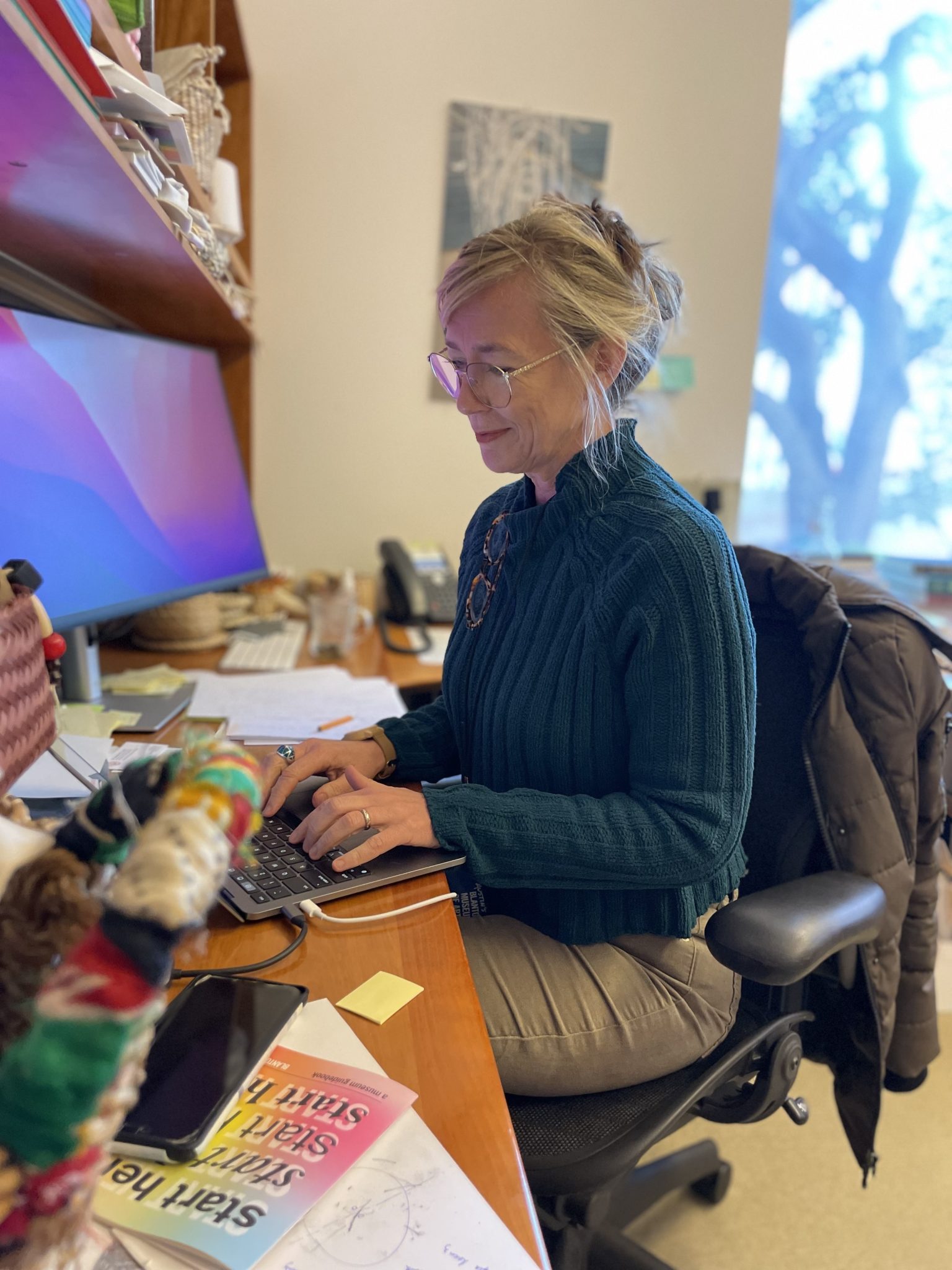
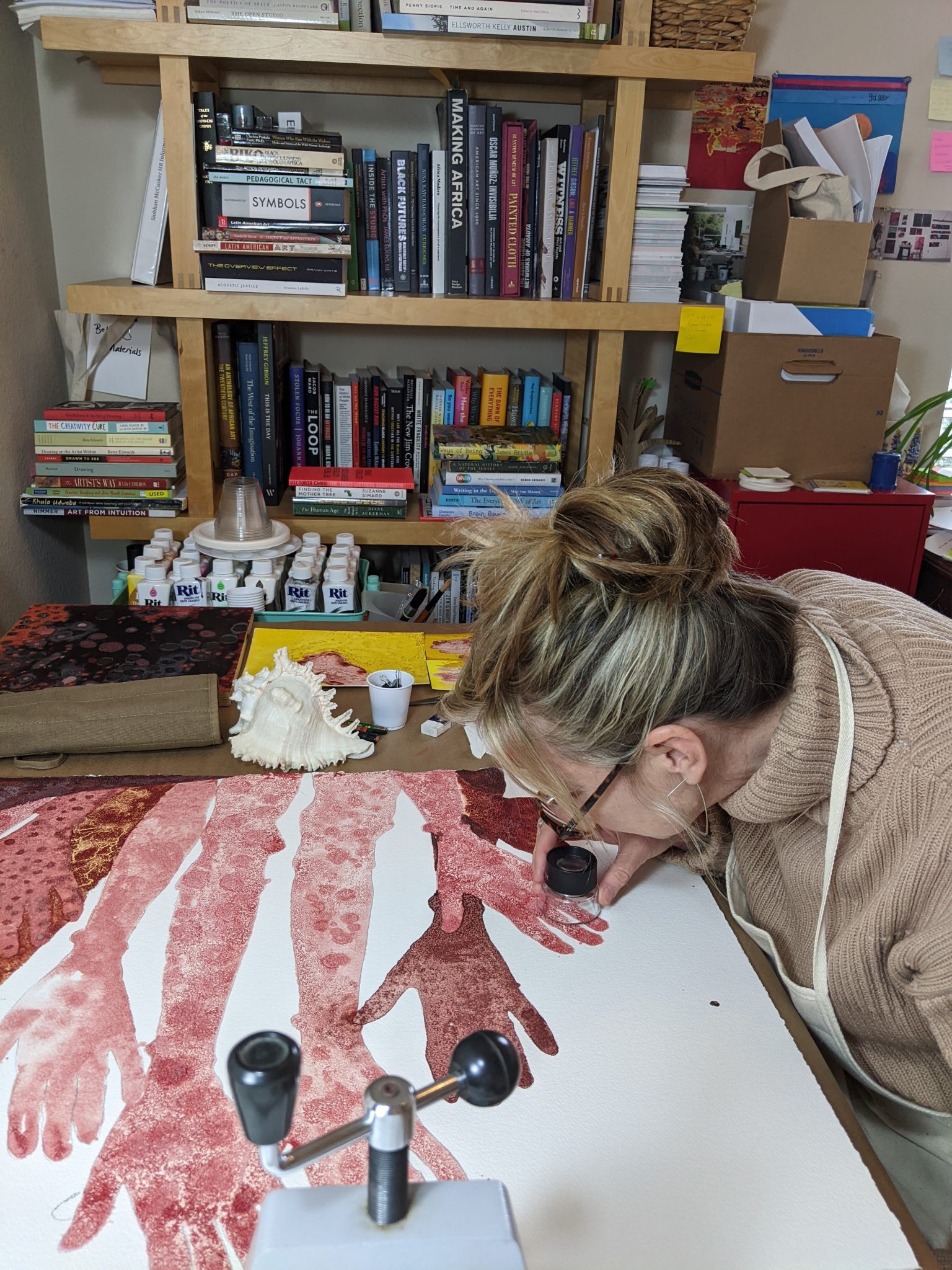
Taryn Mills, Collections Photographer / Artist
As the collections photographer at the Blanton, I photograph all of the artwork that we have in our collection at the museum. I create high-res images of the artwork by closely studying the colors, elements, and material, and how all of those factors interact with light.
Outside of my work here I focus on digitizing art for artists and collections in Austin, photographing live shows for bands, and creative portraiture. Though, my favorite way to create is experimental process photography. Liquid emulsion, cyanotypes, and film processes are my mediums of choice. Printing photographs and collages on things such as glass, cloth, wood, stone, and ceramics. I love working in a darkroom and pushing the limits of my materials. Working with cyanotypes (sun printing) has been a lot of fun since I have moved to Texas, as the Texas sun makes for a crisp print year round.
My job has given me the opportunity to get up close and personal with the art, getting to spend quality time with the pieces as they get their studio shots. Many themes and elements from the art I work with has made its way into my personal projects. It would be impossible for me to work with our collection of art all day and go home uninspired!
Find Taryn at @tarynshoots.atx on Instagram.

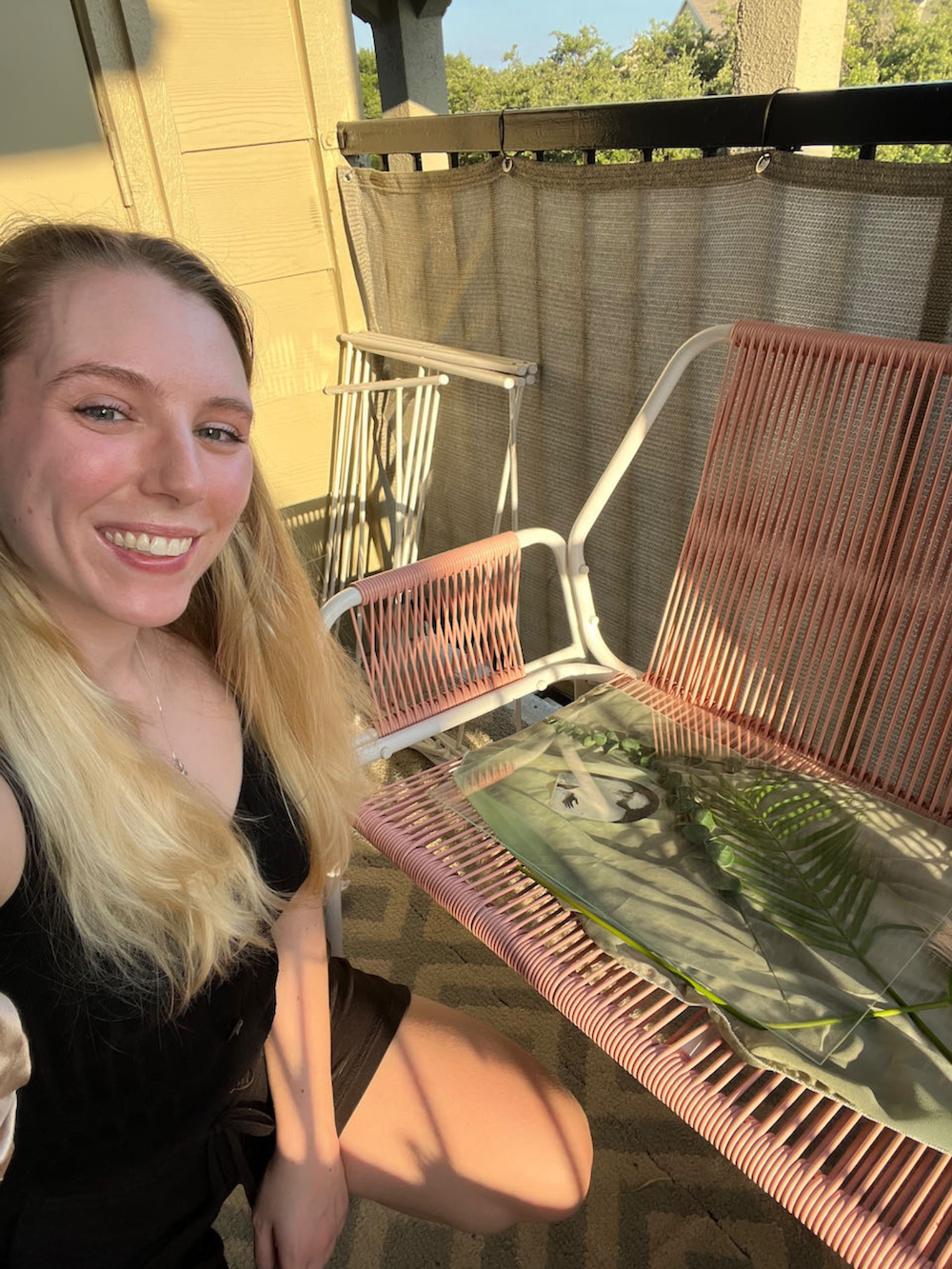
Vanessa Atienza, Assistant Manager of Security / Artist
A real life Day Jobs anecdote: as a Gallery Assistant one day I met Eric Avery, an artist with works in the Blanton’s collection, including a couple pieces currently on view. We were having a lovely conversation about Stacked Waters and Siphonophora when he started to ask me about what kind of art I was working on. At the time, I was experimenting with bleaching text onto clothes and in the span of that one conversation he talked me through the block printing process and convinced me that it was simple, and I would love it. Sure enough, he was correct; I’ve been leaning into these methods since then.
I am an artist and community archivist who uses a few different streams of practice from songwriting and producing to visual arts on paper and textile or work on either side of the camera. My current role at the Blanton is Assistant Manager of Security; spending my days working in this front-facing department which fosters moments of human connection has absolutely been instrumental and enlightening to these paths. Over a year ago, I started an archival project that was conceived within these galleries. Ms Cashmere’s Loveline is an anonymous hotline for anyone to share understandings, confessions, or responses to the question: What do you know about love? The purpose of this is to raise the vibrational frequency of anyone that participates, which raises our collective energy. After spending years helping visitors navigate the galleries whether seeking comfort or inspiration, one major understanding I have come to is this: we are all here with an admonition to heal ourselves and to teach each other these paths toward healing — this is what art is and what art does, and this is how we heal the community and the world.
Find Vanessa at @givemecashmere on Instagram.




Thank you so so much not only for this insightful post but also for the exhibition that inspired and informed your post! Truly eye opening! As an emerging multidisciplinary visual artist myself whose day job involves being a food delivery driver I now find that the associated objects and materials as well as my place of employment has already taken an influential role in my thinking, perception, and approach to my practice and life. Also, it’s about time that the world knows and understands the inner workings of the artistic population and the modes and methods this community utilizes in order for them to see and enjoy success. The fruits of their labor, so to speak. I hope that an accompanying exhibition catalog for Day Jobs will be forthcoming and available to purchase as I’ve browsed your site and have not seen one, as I would love to dig deeper into the concept behind this earth shattering show. Pun intended: good job!
—Cheri Regis
Such a cool exposé on the museum employees. It adds another layer to the museum experience. Bravo!